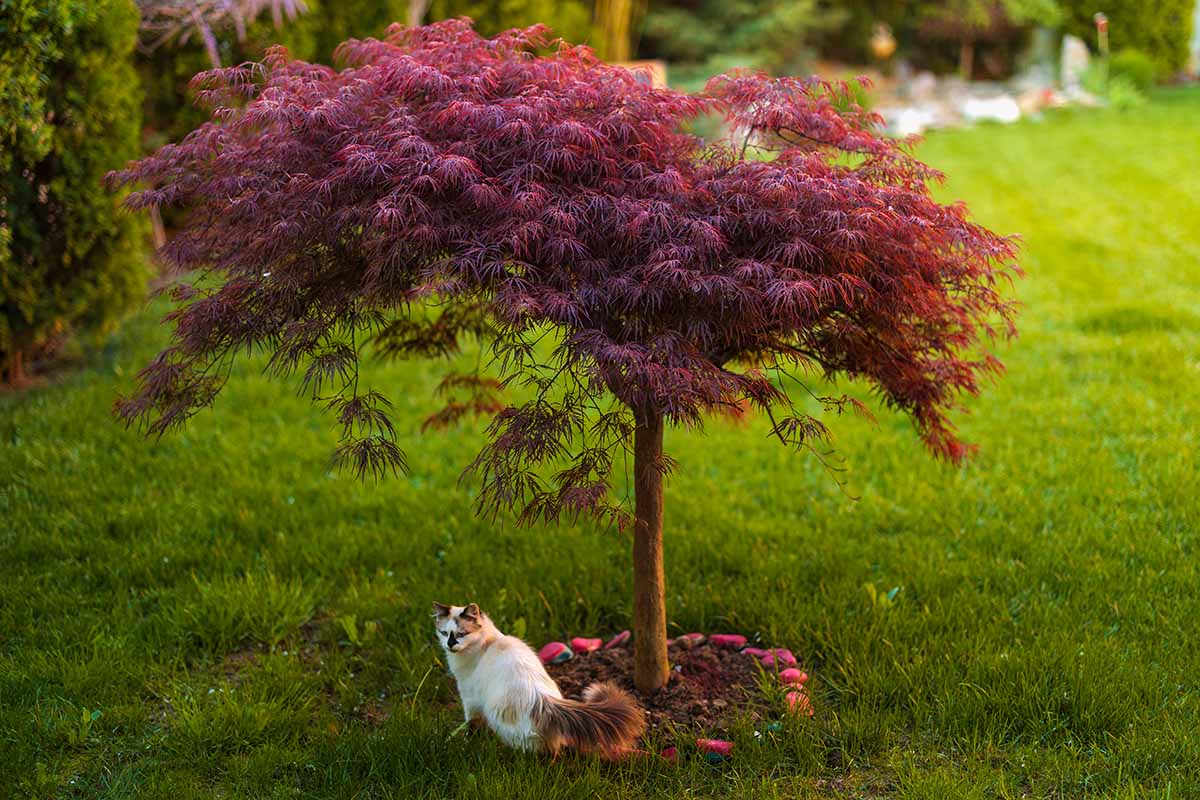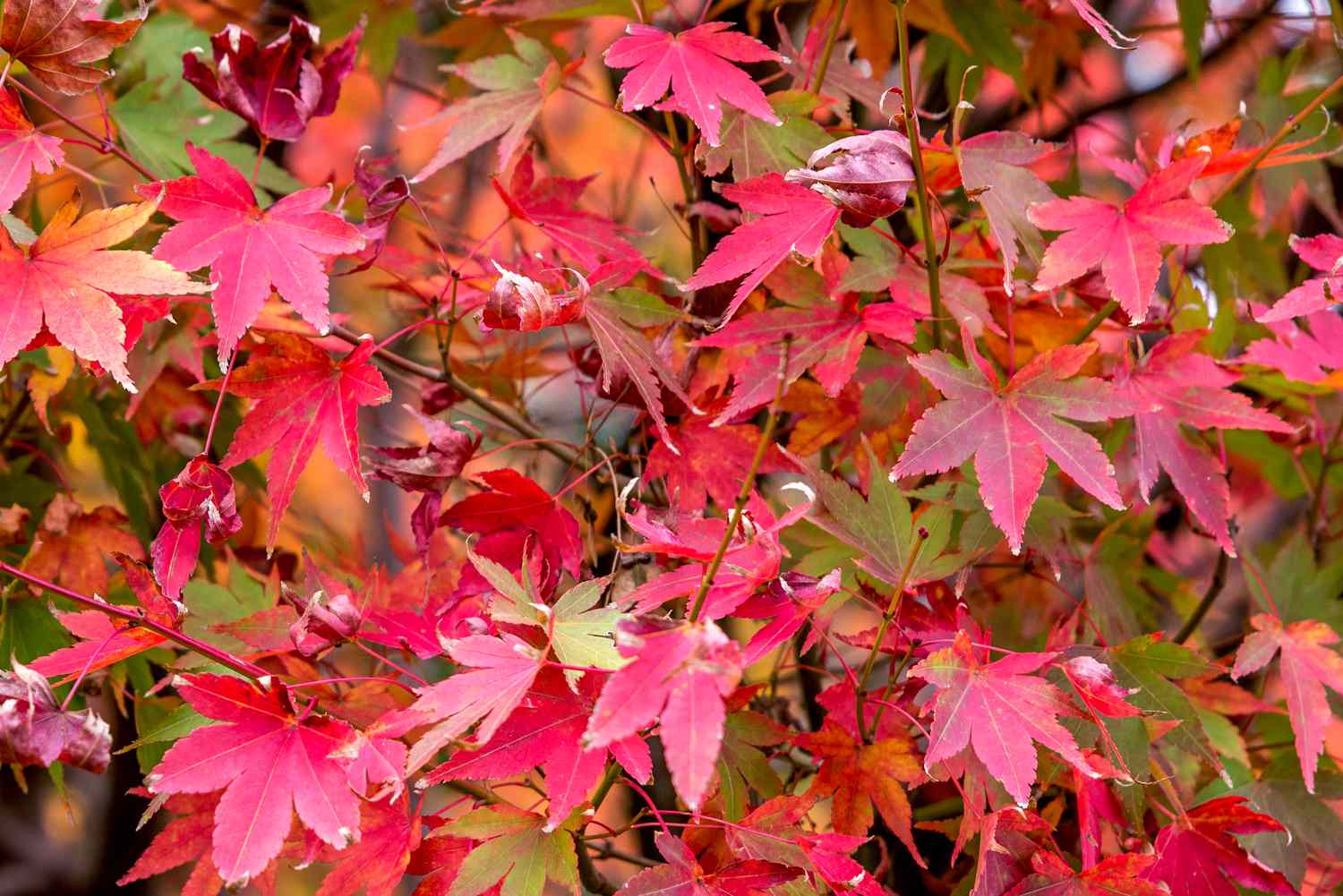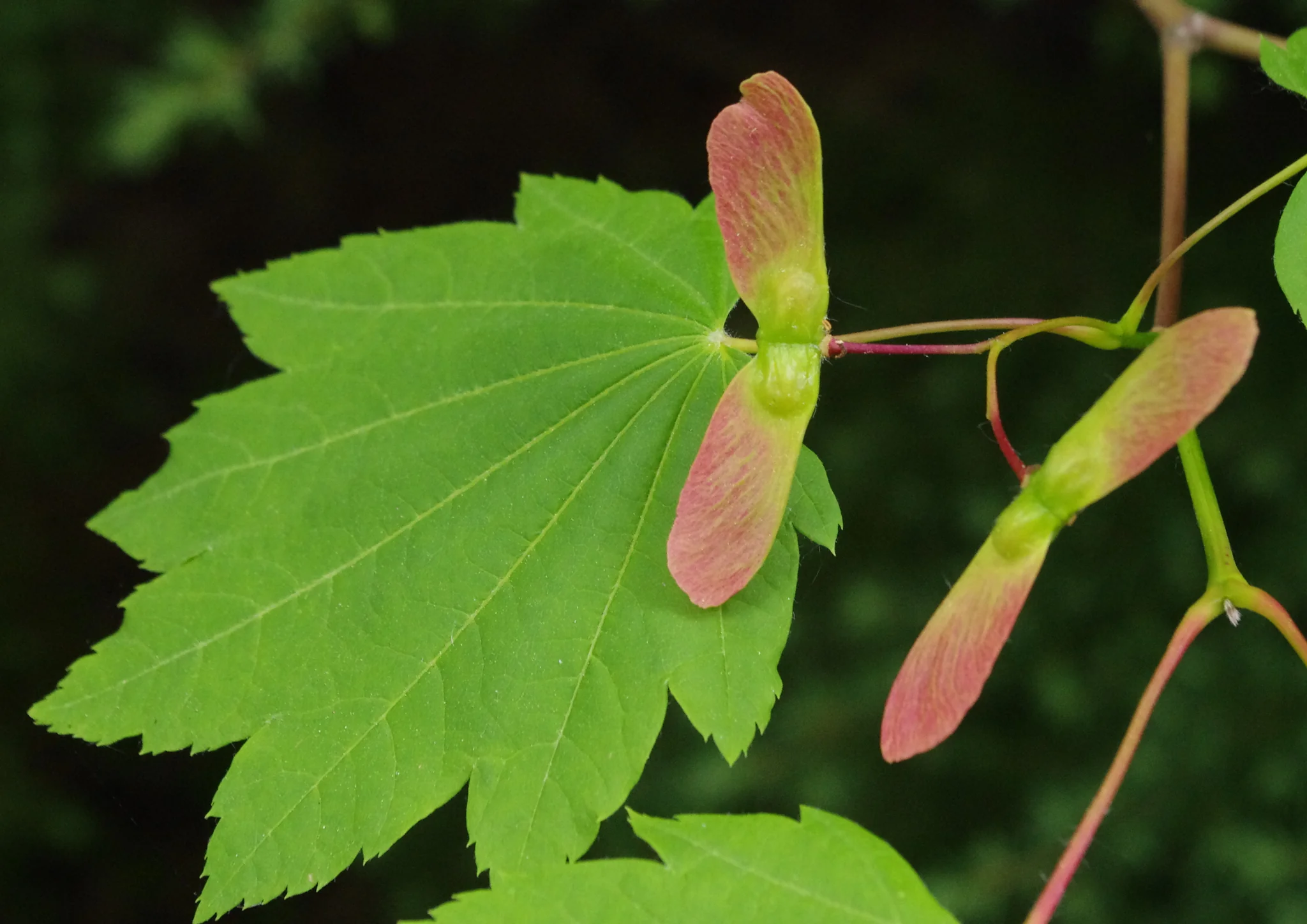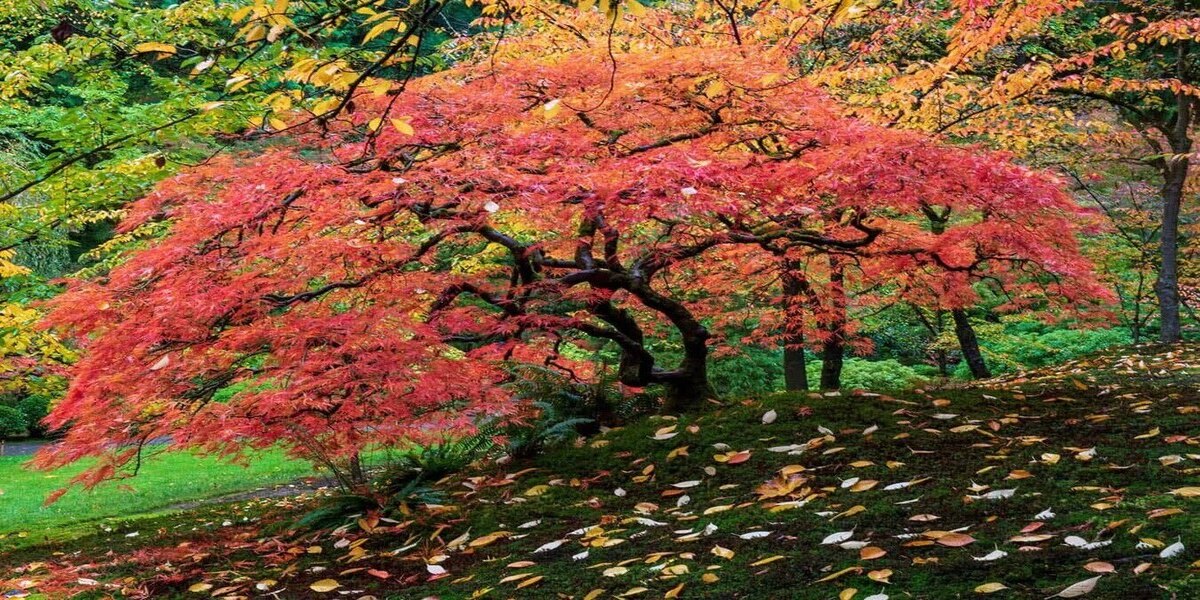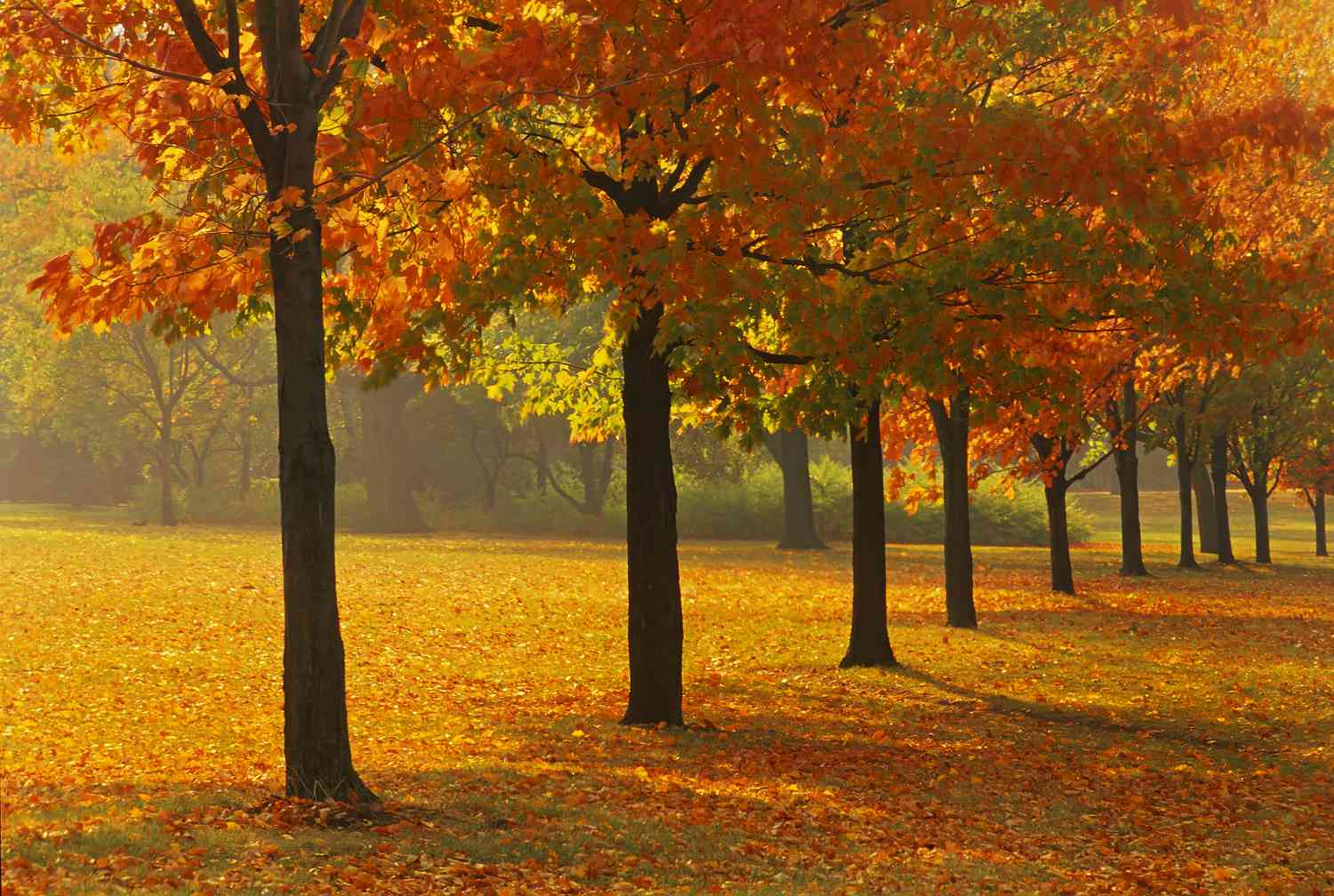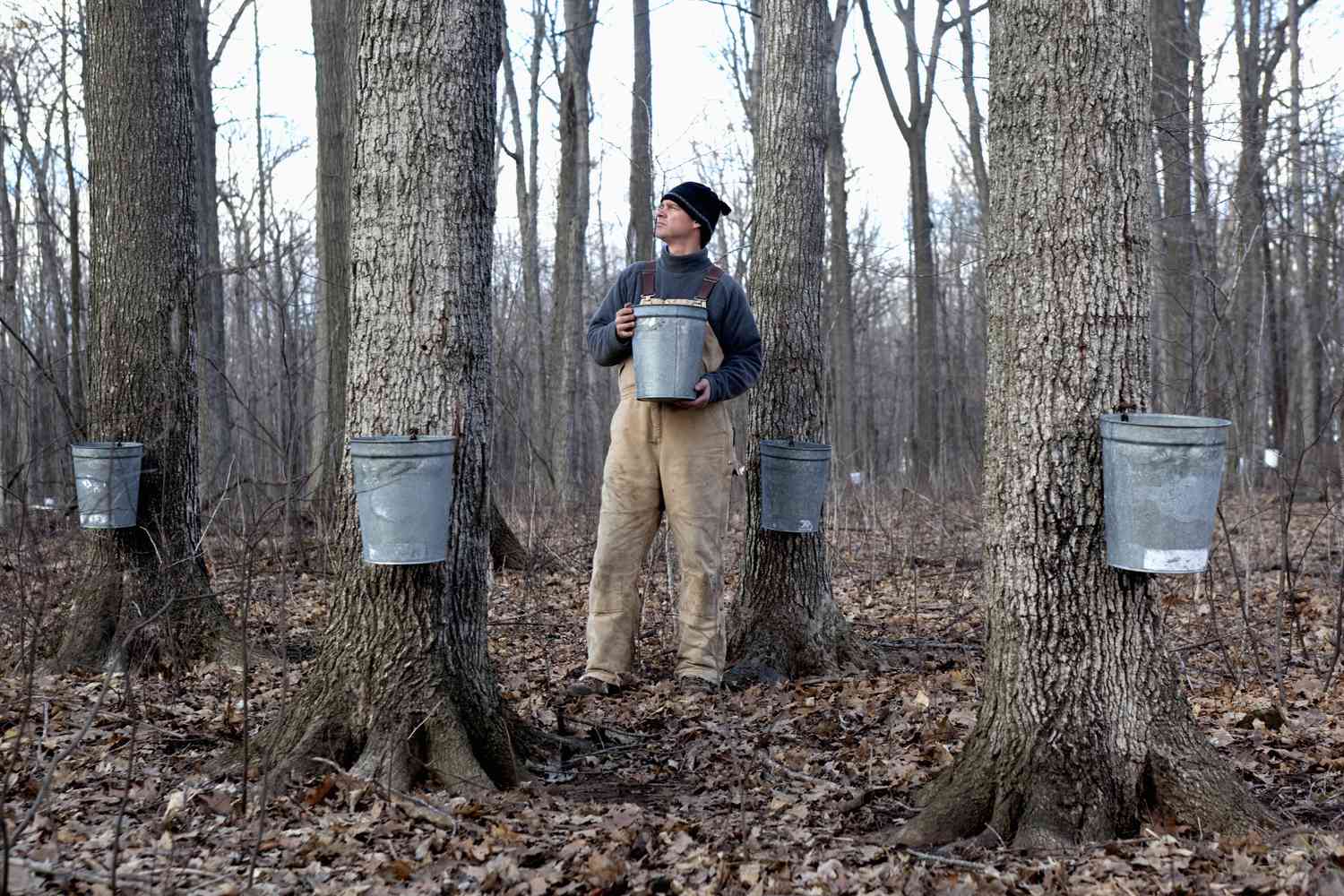Home>Gardening Techniques>Plant Care>How To Grow Maple Trees


Plant Care
How To Grow Maple Trees
Modified: January 22, 2024
Learn the essential plant care tips to successfully grow maple trees in your garden. Discover expert advice on watering, sunlight, pruning, and more for healthy and beautiful maple trees.
(Many of the links in this article redirect to a specific reviewed product. Your purchase of these products through affiliate links helps to generate commission for Chicagolandgardening.com, at no extra cost. Learn more)
Table of Contents
Introduction
Welcome to the wonderful world of maple trees! If you’re a plant enthusiast or just looking to enhance your garden, growing maple trees can be a rewarding experience. Maple trees are highly valued for their beauty, shade, and their ability to produce sweet and delicious maple syrup. Whether you’re a seasoned gardener or new to plant care, this comprehensive guide will provide you with all the information you need to successfully grow and maintain maple trees.
Maple trees belong to the genus Acer and are known for their vibrant foliage, stunning autumn colors, and distinctive crown shapes. These trees are native to North America, Europe, and Asia and are widely planted for their ornamental value. In addition to adding aesthetic appeal to your landscape, maple trees can also provide shade, attract wildlife, and contribute to the overall biodiversity of your garden.
Before you embark on your maple tree-growing journey, it’s important to understand the different maple tree varieties and choose the right one for your specific needs. Maple trees come in a wide range of species, each with its own unique characteristics. Some popular maple tree species include the iconic sugar maple (Acer saccharum), the red maple (Acer rubrum), the silver maple (Acer saccharinum), and the Japanese maple (Acer palmatum).
Once you have selected the right maple tree for your garden, the key to successful growth lies in proper planting techniques and maintenance. This guide will walk you through step by step, from selecting the right maple tree and planting it correctly, to providing the right soil conditions, watering and fertilizing, pruning, dealing with pests and diseases, and even harvesting and using maple syrup.
So, if you’re ready to dive into the world of maple tree care and learn how to create a stunning landscape that will delight you and your family for years to come, let’s get started!
Selecting the Right Maple Tree
Choosing the right maple tree is the first and crucial step in your maple tree-growing journey. With so many varieties to choose from, it’s important to consider your specific needs and the conditions of your garden. Here are some factors to consider when selecting a maple tree:
- Climate: Maple trees have different climate preferences, so it’s essential to choose a species that is suitable for your specific climate. Some maple trees thrive in colder regions, while others prefer warmer climates.
- Size: Consider the available space in your garden and choose a maple tree that fits well. Some maple trees can grow to be quite large, while others have a more compact size. Take into account the eventual height and spread of the tree when making your selection.
- Leaf Color: Maple trees are known for their beautiful foliage, which can vary in color. If you have a preference for a particular leaf color, such as the vibrant red of the red maple or the golden hues of the sugar maple, make sure to choose a maple tree that offers the desired leaf color.
- Growth Rate: Consider how fast you want your maple tree to grow. Some maple trees have a faster growth rate, while others are slower-growing. Keep in mind that faster-growing trees may require more frequent pruning and maintenance.
- Soil Conditions: Pay attention to the soil conditions in your garden. Maple trees typically prefer well-drained soil that is slightly acidic. If your soil is clayey or compacted, you may need to amend it to create a more suitable environment for the maple tree.
Once you have considered these factors, you can start exploring different maple tree species and cultivars. Visit local nurseries or consult with horticulturists to get advice on the best maple trees for your specific needs. It’s also beneficial to research the specific requirements and characteristics of the maple tree varieties you are interested in to ensure that they are a good match for your garden conditions.
By carefully selecting the right maple tree for your garden, you will set the foundation for a healthy and thriving tree that will bring beauty and enjoyment to your landscape for years to come.
Planting the Maple Tree
Once you have selected the perfect maple tree for your garden, it’s time to plant it and give it the best start in its new home. Proper planting techniques are essential to ensure the tree’s long-term health and growth. Here are the steps to follow when planting a maple tree:
- Choosing the Planting Location: Select a location that provides adequate sunlight for the specific maple tree species you have chosen. Most maple trees thrive in full sun or partial shade. Ensure that the planting site has good drainage and enough space for the tree to grow without any obstructions.
- Preparing the Soil: Before planting, prepare the soil by removing any weeds, grass, or debris from the planting area. Loosen the soil with a garden fork or tiller to a depth of at least 12 inches. This will help the roots penetrate the soil easily and establish a strong foundation.
- Digging the Hole: Dig a hole that is wider and slightly shallower than the root ball of the maple tree. The hole should be wide enough to accommodate the spread of the roots. A general rule of thumb is to make the hole two to three times wider than the root ball.
- Planting the Tree: Place the maple tree in the center of the hole, making sure that the top of the root ball is level with or slightly above the surrounding soil. Gently backfill the hole with the loosened soil, pressing it firmly to eliminate any air pockets around the roots. Avoid packing the soil too tightly, as this can hinder root growth.
- Watering: After planting, thoroughly water the newly planted maple tree to settle the soil and ensure proper hydration. Provide enough water to moisten the entire root ball and the surrounding soil. Going forward, make sure to keep the soil consistently moist but not waterlogged, especially during dry periods.
- Mulching: Apply a layer of organic mulch, such as wood chips or shredded bark, around the base of the tree. Mulching helps conserve moisture, regulate soil temperature, and suppress weed growth. Make sure to leave a small gap between the mulch and the base of the tree to prevent excessive moisture buildup and potential rotting.
Remember to monitor the newly planted maple tree closely and provide it with proper care and attention. Regularly check the moisture level of the soil and adjust the watering as needed. It’s also important to protect the young tree from harsh weather conditions, such as strong winds or extreme temperatures, until it becomes established.
By following these planting steps and providing the necessary care, you will give your maple tree the best chance to flourish and become a beautiful addition to your garden.
Providing the Right Soil Conditions
The soil conditions play a crucial role in the growth and health of maple trees. Providing the right soil environment will help the tree establish strong roots and thrive over time. Here are some important factors to consider when it comes to soil conditions for maple trees:
- Drainage: Maple trees prefer well-drained soil to prevent waterlogging, which can lead to root rot and other issues. If your soil tends to retain water, it may be necessary to improve drainage by adding organic matter, such as compost or well-rotted manure, to the planting site. This will help create a looser soil structure and enhance drainage capabilities.
- pH Level: Most maple trees prefer slightly acidic to neutral soil with a pH range of 5.5 to 7.0. Testing the pH of your soil can help you determine if any amendments are necessary. If the pH is too acidic, you can add lime to raise it. Conversely, if the soil is too alkaline, you can incorporate elemental sulfur or acidic organic matter to lower the pH.
- Soil Composition: Maple trees thrive in soil that is rich in organic matter and nutrients. Incorporating well-rotted compost, leaf mold, or aged manure into the soil before planting will help improve its nutrient content and moisture-holding capacity. These organic amendments also enhance the soil’s texture and structure, making it easier for the roots to penetrate and establish.
- Soil Aeration: Adequate soil aeration is essential for the health of maple tree roots. Compacted soil restricts root growth and inhibits nutrient absorption. To improve soil aeration, you can use a garden fork or aerator to loosen compacted soil and enhance oxygen circulation.
- Soil Moisture: While well-drained soil is important, consistent moisture is also necessary for maple trees to thrive. Regularly monitor the moisture levels of the soil, particularly during dry spells, and water as needed. Applying a layer of mulch around the base of the tree will help conserve moisture and regulate soil temperature.
It’s worth noting that different maple tree species may have specific soil requirements. Some species, like the silver maple, can tolerate a wider range of soil conditions, including wet or poorly drained soils. Conversely, other species, like the sugar maple, prefer well-drained and slightly acidic soil. It’s important to research the specific soil preferences of the maple tree species you are growing to provide the optimal conditions.
By creating the right soil conditions for your maple tree, you will ensure its healthy growth and establish a strong foundation for long-term success. With proper soil preparation and maintenance, your maple tree will thrive and provide beauty and enjoyment for years to come.
Watering and Fertilizing
Proper watering and fertilizing are essential for the healthy growth and overall well-being of maple trees. By providing adequate moisture and essential nutrients, you can help your maple tree thrive and maintain its vibrant foliage. Here are some guidelines to follow when it comes to watering and fertilizing your maple tree:
Watering:
Maple trees require regular watering, especially during dry periods. The key is to maintain consistent moisture in the soil without overwatering. Here are some tips for watering your maple tree:
- Establishment Period: During the first year after planting, it’s important to keep the soil consistently moist. Water deeply and thoroughly, ensuring that the entire root ball gets soaked. Avoid frequent shallow watering, as it encourages shallow root growth.
- Frequency: The frequency of watering will depend on various factors, such as soil type, weather conditions, and the maturity of the tree. As a general guideline, aim to water deeply once every 7-10 days during dry spells. Adjust the frequency based on the moisture level in the soil.
- Timing: Water early in the morning or in the late afternoon to minimize water loss due to evaporation. This allows the tree to soak up the moisture efficiently before the heat of the day.
- Watering Techniques: Use a soaker hose or drip irrigation system to ensure that water reaches the root zone effectively. Avoid overhead watering, as it can promote leaf diseases and wasteful water usage.
Fertilizing:
Fertilizing maple trees provides them with the necessary nutrients for healthy growth and development. Here are some tips for fertilizing your maple tree:
- Timing: Fertilize maple trees in early spring before new growth appears. This allows the tree to utilize the nutrients effectively during the growing season.
- Slow-Release Fertilizer: Choose a slow-release or organic fertilizer specifically formulated for trees. This will provide a consistent supply of nutrients over time and prevent the risk of over-fertilization.
- Application Rate: Follow the instructions on the fertilizer package for the recommended application rate. Avoid over-fertilizing, as it can lead to excessive growth, weak branches, and increased susceptibility to pests and diseases.
- Application Method: Spread the fertilizer evenly around the tree’s drip line, which is the area beneath the outer extent of the branches. Avoid applying fertilizer directly against the trunk, as it can cause root burn.
- Mulching: Applying a layer of organic mulch around the base of the tree can also provide a slow release of nutrients as it breaks down over time.
Regularly monitor the moisture level of the soil and adjust your watering schedule accordingly. Similarly, assess the overall health and growth of your maple tree to determine if additional fertilization is necessary. With proper watering and fertilizing, you will help your maple tree thrive and maintain its vigor and beauty.
Pruning and Maintaining the Tree
Pruning plays a crucial role in maintaining the health, appearance, and structural integrity of maple trees. Regular pruning also promotes better air circulation and sunlight penetration, which can reduce the risk of disease and encourage strong growth. Here are some guidelines for pruning and maintaining your maple tree:
- Timing: The best time to prune maple trees is during late winter or early spring, before new growth begins. Pruning during this time minimizes stress on the tree and allows for quick healing of pruning wounds.
- Objectives: Identify the objectives for pruning your maple tree. Pruning goals may include removing dead or diseased branches, improving the tree’s shape and structure, promoting better air circulation and sunlight penetration, or reducing the risk of limb breakage.
- Pruning Techniques: Use proper pruning techniques to ensure the health and longevity of your maple tree. Start by removing any dead, damaged, or crossing branches. Make clean, angled cuts just outside the branch collar, without leaving any stubs. Avoid pruning large branches, as it can affect the tree’s stability.
- Thinning the Canopy: Thinning the canopy of the maple tree involves selectively removing some of the interior branches to promote better air circulation and sunlight penetration. This helps minimize the risk of fungal diseases and encourages new growth.
- Size Control: If your maple tree is getting too large for its designated space, selective pruning can help control its size. However, it’s essential to avoid excessive pruning that can stress the tree or compromise its structure.
- Regular Maintenance: Beyond pruning, regular maintenance tasks such as removing weeds and fallen leaves from around the base of the tree are important. This helps minimize competition for nutrients and reduces the risk of pests and diseases.
It’s essential to keep in mind that every pruning cut has the potential to impact the tree’s growth and development. Therefore, proper pruning techniques and thoughtful consideration of the tree’s long-term health are key. If you are uncertain or have concerns about pruning your maple tree, consult with a professional arborist who can provide expert advice and ensure the well-being of your tree.
By following proper pruning practices and consistently maintaining your maple tree, you will promote its health, enhance its natural beauty, and enjoy the benefits of a well-cared-for landscape addition.
Dealing with Pests and Diseases
Maple trees, like any other plant, can be susceptible to pests and diseases. It’s important to be vigilant and take proactive measures to keep your maple tree healthy and pest-free. Here are some common pests and diseases that affect maple trees and how to deal with them:
Pests:
Aphids: Aphids are small, sap-sucking insects that can infest maple trees. Signs of aphid infestation include distorted leaves, sticky residue (called honeydew), and the presence of ants. To control aphids, you can use insecticidal soap or a strong stream of water to dislodge and remove them from the tree. Ladybugs and lacewings are natural predators of aphids and can help keep their populations in check.
Scale Insects: Scale insects are tiny, hard-shelled pests that feed on the sap of maple trees. They can cause yellowing leaves, sooty mold, and stunted growth. To control scale insects, you can use horticultural oil or insecticidal soap to suffocate and kill them. Pruning heavily infested branches may also be necessary in severe cases.
Caterpillars: Some caterpillars, such as the maple leafcutter, can defoliate maple trees if left uncontrolled. Handpicking or using biological controls, such as Bacillus thuringiensis (BT), can effectively manage caterpillar populations. In severe cases, professional intervention may be required.
Diseases:
Verticillium Wilt: Verticillium wilt is a fungal disease that affects many tree species, including maples. Early symptoms include yellowing and wilting of leaves, followed by branch dieback. Preventive measures include planting resistant varieties and maintaining overall tree health through proper cultural practices.
Tar Spot: Tar spot is a cosmetic fungal disease that causes black spots on maple tree leaves. Although unsightly, it generally does not harm the overall health of the tree. Raking and removing fallen leaves in the autumn can help reduce the chances of reinfection the following year.
Anthracnose: Anthracnose is a fungal disease that can affect the foliage and branches of maple trees. It causes irregular brown patches, leaf curling, and twig dieback. Pruning affected branches and ensuring proper airflow and sunlight penetration can help prevent and manage anthracnose.
It’s important to note that prevention is often the best defense against pests and diseases. Maintaining overall tree health through proper watering, fertilizing, and pruning practices can help strengthen the maple tree and make it more resistant to problems. Regularly inspecting your tree for any signs of pests or diseases will enable early detection and prompt action.
If you are unsure about the specific pest or disease affecting your maple tree, consult with a local arborist or extension service for accurate identification and appropriate treatment options.
By staying proactive and taking appropriate measures, you can effectively manage pests and diseases and preserve the health and beauty of your maple tree.
Harvesting and Using Maple Syrup
One of the most rewarding aspects of growing maple trees is the opportunity to harvest and enjoy your own homemade maple syrup. Although the process may seem daunting, with the right knowledge and equipment, you can turn the sap of your maple tree into delicious syrup. Here’s a rundown of how to harvest and use maple syrup:
Tapping the Trees:
The first step in harvesting maple syrup is tapping the trees to collect the sap. This is typically done in late winter or early spring when daytime temperatures are above freezing and nighttime temperatures are below freezing. Follow these steps to tap your maple tree:
- Identify healthy, mature maple trees that are at least 10 to 12 inches in diameter.
- Drill a hole about 2 inches deep at a slight upward angle into the trunk of the tree. The hole should be around 3/8 to 1/2 inch in diameter.
- Insert a spile or tap tightly into the hole, making sure it’s secure and properly seated.
- Attach a collection container, such as a bucket or plastic tubing, to the spile to collect the sap. Make sure the container is clean and food-safe.
- Monitor the collection containers daily, emptying them as needed, and store the sap in a cool place until you’re ready to start the syrup-making process.
Making Maple Syrup:
Once you have collected enough sap, it’s time to start the syrup-making process. Here’s a simplified breakdown of the steps involved:
- Filter the sap to remove any impurities or debris using a fine mesh sieve or cheesecloth.
- Transfer the filtered sap to a large pot or pan and begin the boiling process.
- Continue boiling the sap until the water content evaporates, and the sap reaches the desired sugar concentration, usually around 66-67% sugar content. This process can take several hours.
- Once the desired sugar concentration is reached, remove the pan from the heat and let it cool slightly.
- Skim off any foam or impurities that may have accumulated on the surface of the syrup.
- Pour the finished syrup into clean, sterilized containers, such as glass bottles or jars.
- Store the maple syrup in a cool, dark place, such as a pantry or refrigerator, to prolong its shelf life.
Using Maple Syrup:
Maple syrup is a versatile and delicious ingredient that can be used in various culinary applications. Here are some popular ways to use maple syrup:
- Drizzle over pancakes, waffles, or French toast for a classic breakfast treat.
- Use as a natural sweetener in coffee, tea, or smoothies.
- Incorporate into salad dressings, marinades, or glazes for a touch of sweetness.
- Substitute maple syrup for other sweeteners in baking recipes for a unique flavor twist.
- Enjoy as a topping for ice cream, yogurt, or oatmeal.
Remember, homemade maple syrup is a precious and labor-intensive product, so savor every delicious drop. The process of tapping maple trees and making syrup can be a rewarding and memorable experience that connects you to nature and imparts a sense of pride in your culinary creations.
Conclusion
Growing and caring for maple trees can be a truly rewarding experience, whether you’re a seasoned gardener or a plant enthusiast looking for a new project. With their vibrant foliage, stunning autumn colors, and the sweet reward of homemade maple syrup, maple trees bring beauty and joy to any landscape.
In this comprehensive guide, we have covered the various aspects of planting and maintaining maple trees. From selecting the right maple tree for your garden to providing the optimal soil conditions, watering and fertilizing, pruning, and dealing with pests and diseases, each step is crucial in ensuring the health and success of your trees.
Remember to choose the maple tree species that aligns with your gardening goals and climate conditions, and prepare the planting site with proper soil amendments. Regular watering, fertilizing, and pruning are essential for maintaining the health and appearance of your maple tree. By staying vigilant and addressing any pest or disease issues, you can keep your tree in optimal condition.
And let’s not forget the sweet reward that maple trees offer – the opportunity to harvest and enjoy your very own homemade maple syrup. Tapping your trees, collecting the sap, and boiling it down into rich and delicious syrup is a beautiful process that connects you to nature and the bounties it provides.
So, whether you choose to grow maple trees for their ornamental beauty, shade, or the pleasure of making maple syrup, these remarkable trees will undoubtedly bring years of joy and satisfaction to your garden. Follow the guidelines outlined in this guide, stay attentive to your trees’ needs, and soon you’ll be rewarded with healthy, thriving maple trees that will grace your landscape for generations to come.
